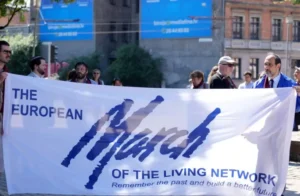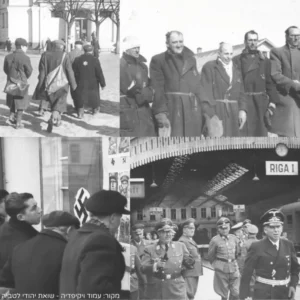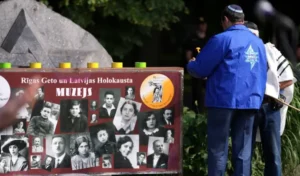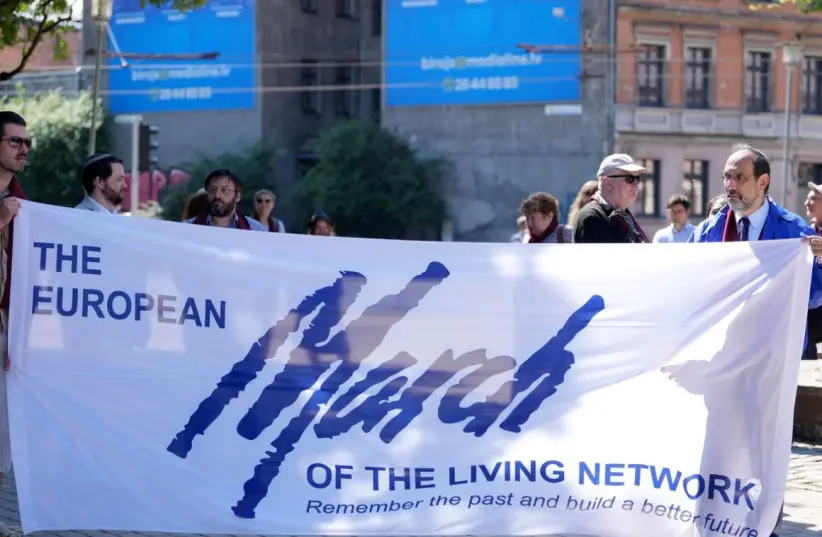A special March of the Living took place yesterday in Riga, Latvia, commemorating the Holocaust of the nation’s Jews, many of whom were murdered by the Germans and their local collaborators in the summer of 1941.

Although the occupation of Latvia and the murder of Jews began in late June of 1941, Lithuania commemorates the Holocaust on July 4, the day on which Riga’s largest synagogue, the “Gogol Shul,” was destroyed. The synagogue, completed in 1871, was burnt to the ground with over 400 Jews who sought refuge inside the synagogue. On that day, the Germans and Latvian nationalists also set fire to 20 synagogues, some with the people inside, and murdered anyone who tried to escape the flames. Of the 93,000 Jews living in Latvia on the eve of WWII, approximately three-quarters of them – 70,000 –were murdered during the Shoah.

Yesterday’s march, held from Riga’s Old Jewish Cemetery to the “Gogol Shul,” concluded with an official memorial ceremony attended by Latvian President Egils Levits and other officials. Michel Gourary, the Director of the European March of the Living, attended the March and spoke at the ceremony:
“Preserving the memory of the victims is vital as we are in the final years of having survivors living amongst us. We are working against the clock and against a constant resurgence of Holocaust denial and distortion. This year’s memorial events – against the background of regional and global turmoil – are of the utmost importance.”

Holocaust survivor, Riga-born Shabtai Dolgitzer, described in his testimony the events leading up to the German invasion of his city: “On the night of July 1, 1941, the Germans entered my street and banished and shot all the Jews.” The next day marked the biggest pogrom in Riga. The Latvians, who did not wait for the Gestapo to arrive, broke into thousands of apartments and imprisoned about 5,000 Jews, almost none of whom survived.”
“The Latvians,” explained Shabtai, “just waited for the Germans to arrive. They began to go wild, and the local radio called on the Latvian people to stand up for their people and take revenge against the Communists and the Jews. They beat us, abused us and imposed a series of prohibitions on us: Jews are forbidden to appear in parks, to go to the movies, to buy food products – only allowed in certain places. Another law forbade Jews to walk on sidewalks, now allowed only near the sidewalks. We were required to wear the yellow star, and whoever did not was banished, usually never to return.”
Shabtai survived the Holocaust after being imprisoned in the ghetto and several labor camps until the liberation: “Life in the labor camps was extremely difficult. We worked in the freezing cold, hungry, living only on soup and a piece of bread every few days. The death rate was enormous. When the Russians arrived, I remembered that I could no longer walk. I crawled. I received a loaf of bread. I just wanted to drink. I was lucky to survive.”
Since its inception in 1988, the International March of the Living has become one of the most prominent organizations in the world for Holocaust commemoration and the struggle against antisemitism, hatred and racism. The organization holds educational activities around the world throughout the year, culminating with the organization’s flagship seven-day educational journeys to Poland, as well as to other European countries in which Jews lived and were murdered during the Holocaust.

